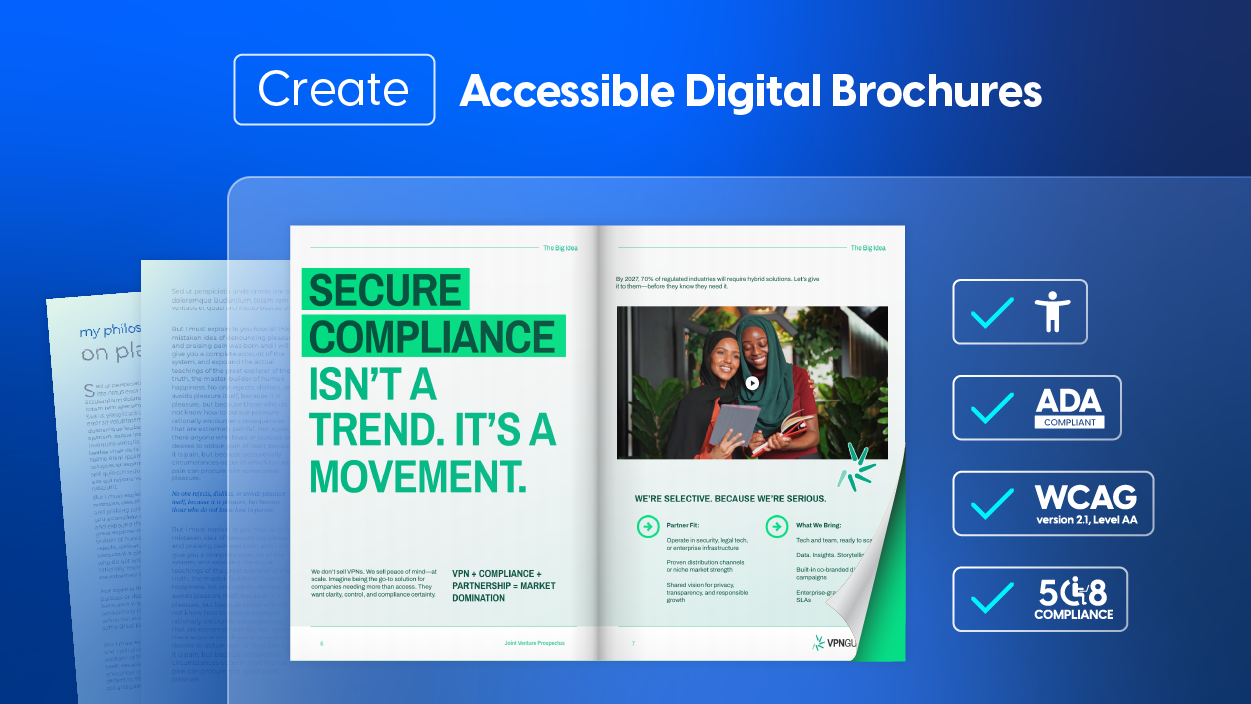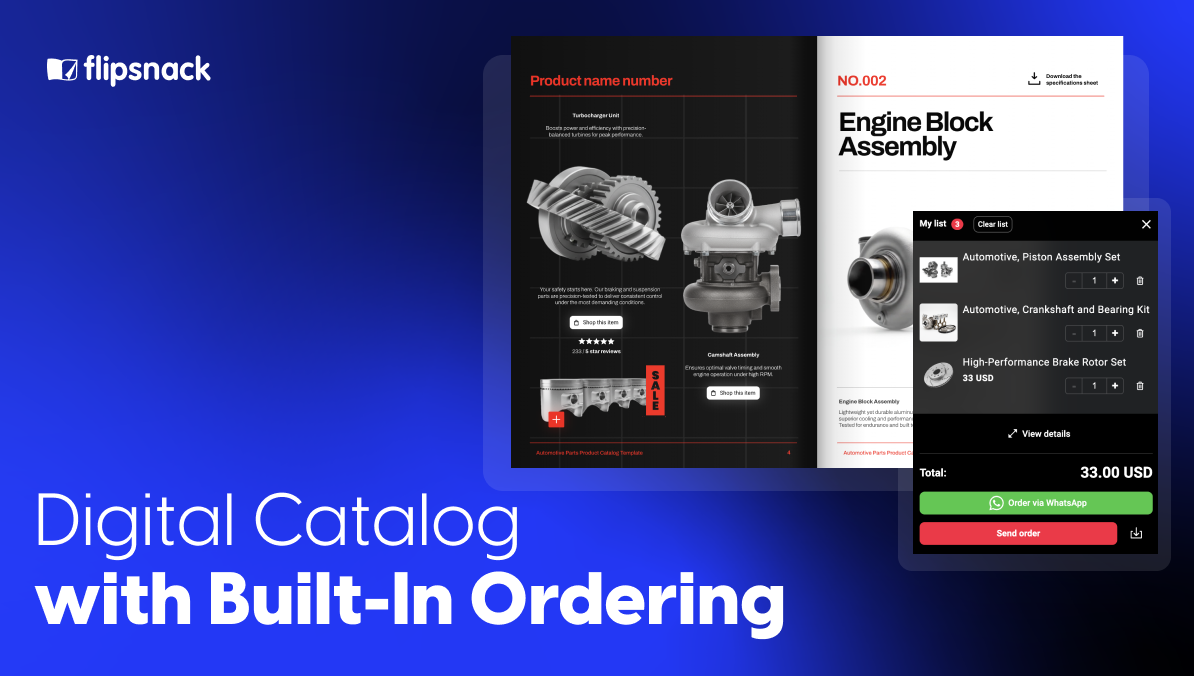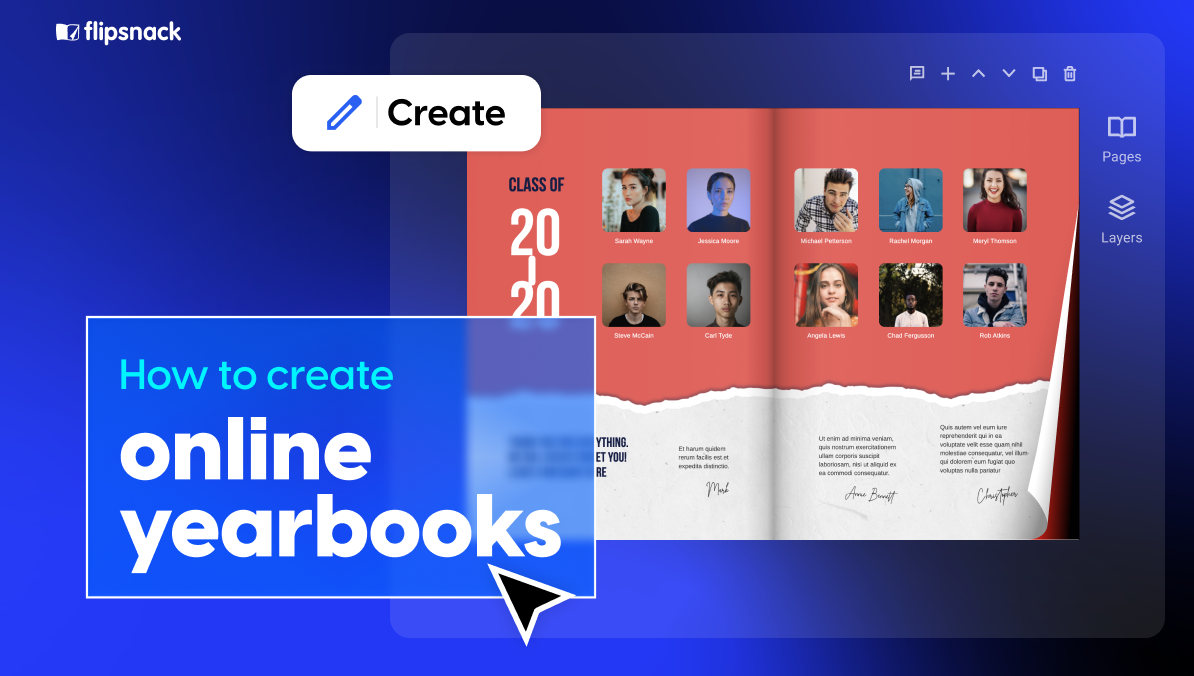A Complete Guide to Creating Accessible Digital Brochures (WCAG & ADA)
In 2022 alone, the U.S. recorded a 12% spike in accessibility lawsuits, underscoring what forward‑thinking marketers already know: accessibility isn’t optional, it’s non‑negotiable.
Brochures remain one of the most widely used content formats across industries, from education to healthcare, finance to hospitality. Yet most brochures still exclude audiences living with visual, cognitive, or motor impairments, intentionally or not. Not designing an accessible brochure leads to more than reputational risks; it invites financial consequences and legal exposure under ADA Title III and Section 508.
This guide will equip you with:
- ADA-compliant brochure checklists for both digital and print
- Accessible brochure templates to start
- Step-by-step brochure accessibility strategies
- Why Flipsnack is the best platform to publish accessible digital brochures

Why accessible digital brochures matter for your business
Designing an accessible brochure is about removing real-world barriers that make everyday materials unreadable or unusable for millions. Whether it’s a tri-fold at a doctor’s office, an informational flyer at a library, or a downloadable product catalog, ADA compliance ensures everyone can interact with your content, regardless of ability.
To support organizations across healthcare, government, education, retail, and nonprofits, we’ve created a checklist for ADA-compliant print marketing materials and digital brochures. These requirements follow WCAG 2.1 Level AA standards and help you confidently meet legal accessibility expectations in the US.
Use this checklist for ADA-compliant brochures (2025-ready) as your go-to resource every time you design or audit marketing content:
Text & Typography
- Use sans-serif fonts like Arial, Helvetica, or Calibri for clean readability.
- Set body text to a minimum of 12pt (print) or 16px (digital) to support those with low vision or aging eyesight.
- Avoid decorative or script fonts that hinder legibility for people with dyslexia or cognitive disabilities.
- Maintain consistent font use throughout the layout to minimize confusion and cognitive overload.
Color & Contrast
- Ensure a minimum contrast ratio of 4.5:1 for normal text, and 3:1 for large text to meet WCAG guidelines.
- Use color contrast checkers to test text-background combinations before publishing or printing.
- Never use color as the sole way to convey information (e.g., don’t say “see the red icon”- use labels, shapes, or icons too).
- Choose accessible color palettes designed to support colorblind readers—tools like Flipsnack’s or Venngage’s color palette generators make this easy.
Structure & Layout
- Use a logical reading order—screen readers follow the content top-down and left-right unless you manually correct this.
- Apply headings (H1, H2, etc.) to break up content and make navigation easier for assistive tech users.
- Add white space and ample margins to reduce visual fatigue.
Visual Elements
- Provide alt text for all meaningful graphics, charts, logos, or illustrations.
- If images are decorative, mark them as such to avoid disrupting screen reader flow.
- Choose icons or symbols that reinforce meaning and improve visual clarity.
- For PDFs or digital brochures, test using tools like NVDA, VoiceOver, or JAWS.
Links & Navigation
- Use descriptive link text: Instead of “Click here,” write “Download the accessibility guide.”
- Ensure all buttons, videos, and embedded links are fully keyboard navigable.
- Include skip navigation links or anchors for long documents.
Avoid auto-playing videos or audio—include clear pause/stop controls if used.
Language & Comprehension
- Write using plain, concise language. If someone with a cognitive disability or a second-language learner reads your content, will they understand it the first time?
- Break up long sentences and use bulleted lists for digestibility.
- Provide visual aids like charts, infographics, or icons to enhance clarity—just remember to make them accessible too.
Alternate Formats
- Always have an accessible PDF version with tagged content and alt texts for download.
- Offer large-print, audio, and HTML versions where applicable.
How Flipsnack is the best platform for creating accessible brochures
Flipsnack integrates accessibility directly into your workflow. Flipsnack builds this tool to comply with ADA and WCAG standards, helping teams ensure both usability and design quality. When you create digital brochures, Flipsnack makes sure every user can navigate and understand your publication.
Key accessibility features in Flipsnack
Flipsnack goes far beyond basic compliance; it embeds accessibility into the very foundation of your digital publishing workflow. Whether you’re uploading a finished PDF or designing from scratch, the platform provides a robust suite of tools that empower you to meet ADA, WCAG 2.1 AA, and Section 508 standards with clarity and ease.
These features, from screen reader compatibility to AI-powered content summaries, go beyond checking boxes. They make your brochures readable, navigable, and inclusive from the first interaction to the last. Below are the core capabilities that make Flipsnack one of the most accessible digital brochure platforms available today. Here’s a closer look at the essential accessibility features Flipsnack offers:
Flipbook player with full keyboard navigation
All navigation buttons and controls are screen reader-friendly and TAB-key navigable.
Accessible content layer
Use the Accessibility tab to add page titles and descriptions. The text is read aloud by assistive software like VoiceOver or JAWS.
AI-Generated summaries
Enable Flipsnack’s AI-powered content extraction to auto-generate page summaries. Proofread, edit, then save; no manual work needed.
Text extraction for exact reading order
Automatically pull exact text from your flipbook into the Accessibility tab. A time-saving dream, especially for high-volume publications.
Upload fully accessible PDFs
Already created an accessible PDF? Upload it and allow users to download directly from your flipbook, complete with tagged content, alt-texts, and contrast control.
Accessible brochure templates in Flipsnack
Creating an accessible brochure doesn’t have to mean starting from a blank page. Flipsnack offers a curated library of professionally designed, accessibility-ready templates—each crafted to help you meet WCAG 2.1 AA and ADA standards without compromising on creativity or visual impact.
Jewelry Company Brochure Example
This interactive template is more than stylish; it’s built for sensory inclusivity. Featuring high-contrast visual layouts and clean, readable typography, it allows marketing and sales teams to showcase luxury collections without compromising accessibility. Embedded videos and GIFs are paired with captioning fields and alt-text support, ensuring content remains meaningful for screen reader users.
Interactive elements like clickable link buttons and product tags are fully keyboard-navigable and can be labeled descriptively to support assistive technologies. The built-in contact form aligns with ADA input standards, making it easy for clients or partners with motor impairments to reach out.
Perfect for digital brochures requiring WCAG 2.1 AA compliance, this template blends beauty with barrier-free engagement—making it a compelling choice for B2B presentations or inclusive promotional campaigns.
Corporate Profile Brochure Example
Ideal for investor briefings, board meetings, and high-stakes introductions, this template offers more than corporate polish it’s built with accessibility in mind. Clean heading structures, semantic layout sections, and consistent visual hierarchy ensure content can be interpreted accurately by screen readers and keyboard users.
With space for embedded video summaries, alt-text-ready infographics, and interactive elements, this template allows stakeholders with disabilities to engage meaningfully. Use descriptive labels for navigation buttons and ensure all performance visuals include textual explanations for users with visual impairments.
Whether you’re creating a public-facing company overview or an internal governance report, this accessible brochure ensures that transparency and inclusion go hand in hand.
Digital Informative Brochure Template
This template is ideal for organizations committed to equity in information delivery. Built for clarity, it uses high-contrast text blocks, legible font choices, and consistent spacing, all essential for readers with low vision or cognitive disabilities.
Infographics and charts are integrated with alt-text fields and contextual descriptions, enabling users of assistive technologies to grasp key data points. Layouts follow a logical reading order, and the design is screen-reader and keyboard-friendly from page one.
Perfect for distributing ADA-compliant curriculum overviews, policy guides, or professional development resources, this brochure can be customized to meet the needs of all readers, whether in digital or print form. For non-profits, government agencies, and educators alike, it’s a ready-to-deploy, accessible communication tool that respects every user’s right to understand.

Design your first accessible brochure with Flipsnack
Making your brochure accessible isn’t just the right thing to do; it’s the strategic thing to do. Inaccessible brochures alienate audiences, limit reach, and invite legal risk. Accessible brochures, on the other hand, build trust, expand engagement, and ensure your message reaches everyone it’s meant for.
Accessibility is not a hurdle; it’s a bridge to better communication. It empowers your brand to connect with people of all abilities while aligning with ADA, WCAG 2.1 AA, and Section 508 standards. Flipsnack makes that possible and practical.






